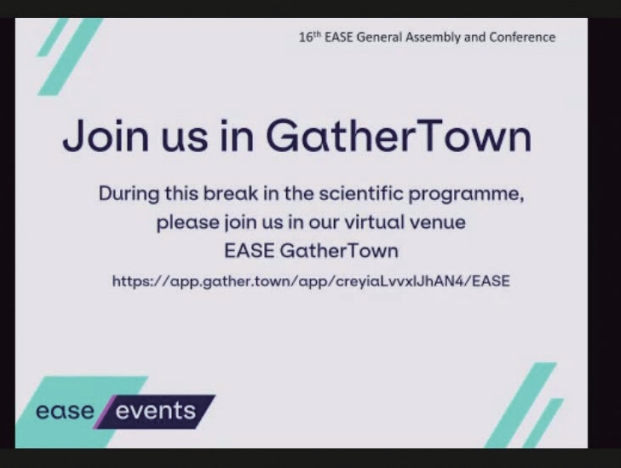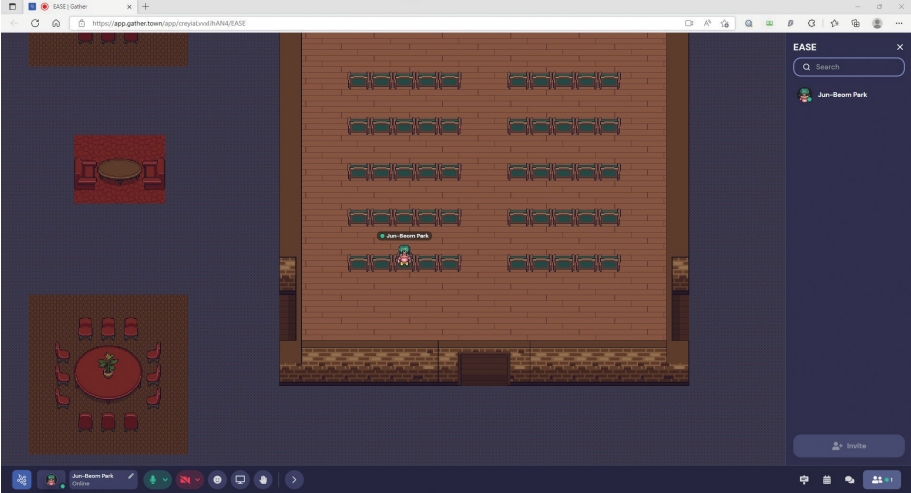Meeting: 16th EASE General Assembly and Conference
Date: 24-26 June 2022
Venue: Valencia, Spain and online
Organizer: European Association of Science Editors
The conference was held in Valencia, Spain and online simultaneously from June 24 (Friday) to June 26 (Sunday) local time. I participated online, so the time difference was a relevant factor. Due to the time difference, the conference began at 10 PM on Friday and at 4 PM on Saturday and Sunday here in Korea. On the first day, at 10 PM Korea time, the conference started with an overall report of the European Association of Science Editors (EASE), including a financial report and a description of the membership according to nationality. Turkey had the most members, while Croatia had the most regional chapters, followed by Turkey. In an editing-related course provided to the members of the EASE, there were 104 participants from Turkey, 23 from Croatia, eight from Ukraine, and five from Romania. Another remarkable aspect of the conference was that the GatherTown virtual meeting platform was used as a place where questions that had not been asked during lectures could be asked, and the participants could have conversations with each other (Figs. 1, 2).
It was easier to focus on the lectures on the 2nd day (Saturday) as they began at 4 PM Korea time. In the “Landscape of scholarly publishing in Spain” session, the distribution of universities (50 public and 33 private universities) and the growth and composition of academic publications in Spain were introduced. Moreover, the speaker presented the types of copyright (e.g., Creative Commons BY-SA) and the percentage of each type. An interesting aspect of this presentation was that each slide contained pictures related to Valencia and Spain to provide further context about Spain. A detailed explanation of preprints was then given, and their advantages and disadvantages were mentioned. MDPI, one of the main sponsors, gave an explanation of open access and a presentation about MDPI. The speaker explained the three types of open access (green, gold, and hybrid) and the benefits that open access brings to researchers, research funding organizations, and the general public. MDPI’s history, the number of articles published, and the time required for publication were introduced as well. The session ended with an introduction of its initiatives, membership, and partnerships. Within my understanding, many people from MDPI participated in the conference and were actively involved in answering questions. In addition, the MDPI representative talked about the efforts they make to find reviewers and how they try to avoid delays by handling publication through their inhouse office.
Professor Ana Marušić from Croatia, co-editor-in-chief of the Journal of Global Health, described in detail how she overcame the obstacles she faced as the editor-in-chief of a small journal. She had a lot of challenges, including a small number of researchers/institutions, difficulties in receiving financial support, and linguistic limitations. She described holding workshops with authors, including prospective authors. She also advised authors to “make haste slowly” and talked about the responsibility for research, how to plan and design studies, and even technical areas such as statistical analysis. An analysis of the workshops was presented. From 2003 to 2011, 17 workshops were held, and the authors who participated in the workshops were cited more frequently in scientific journals and had a higher h-index. Professor Marušić reported that she held workshops with students as well. Although small journals can be expected to experience difficulties, her efforts to overcome them wisely and enthusiastically were impressive.
Thomas Lang gave a presentation on submission guidelines for authors. He proposed preparing manuscript files for submission according to the type of the study. He explained different reporting guidelines that exist for different types of studies: CONSORT (randomized trials), STROBE (observational studies), and SRQR (qualitative research). He emphasized the importance of checklists and mentioned items that could be included in them (e.g., clinical trial registration, patient privacy, data sharing, sample repository and authorship, duplicate publication, divided publication, plagiarism, and copyright transfer). There was also a detailed explanation of references. He pointed out that it can be inappropriate to limit the word count of subheadings of an abstract (e.g., 20 words for Purpose and 140 words for Methods). Finally, he proposed instructions for authors that would be easy to understand and follow.
Session 3, “Innovations from editors to help authors with manuscript submission,” helped me develop a wider viewpoint of the peer review of a journal paper. In general, the process involves an article being submitted to a journal and then reviewed. However, I also had the opportunity to think about journal-independent peer review. One speaker said that deciding whether an article fits a journal is the task of the editor-in-chief, not reviewers. Through journal-independent peer review, multiple review processes can be reduced, and the time it takes for articles to be published can also be shortened. There was also a presentation about journal-agnostic peer review. Dr. Bernd Pulverer introduced eLife, a journal that only publishes articles that go through a preprint review system, even though they have not been published elsewhere, implementing a publish then review model of publishing. In the Cell Press Community Review process, authors select journals that they are interested in, and the editor-in-chief provides initial feedback.
The next lecture was on the publication process of an article. The speaker argued that it would be desirable for assistant editors to check the articles to be published to confirm whether the articles have been prepared well in all areas according to the journal’s instructions and scope. He also said that it was possible to check redundancy, authorship, and data accessibility, and that a senior editor should be selected. He proposed using iThenticate (Turnitin, LLC) to check for duplication and plagiarism and to comply with the Committee on Publication Ethics (COPE) guidelines. A detailed explanation of copyright, data accessibility, and ghost/gift authorship was provided as well. In addition, a presentation was given on helicopter (parachute and neo-colonial) science. The speaker said that the responsibilities of a senior editor included an assessment of the scope and novelty of a study, redundancy with existing publications, and whether a study fits the journal’s standards regarding the publication, such as excluding case studies, and study design. For this, several methods were introduced, such as an inside-out approach method where the results of a journal article can be evaluated first to determine whether the article is suitable for the journal, whether desk rejection is appropriate, or whether an associate editor should be selected. For the journal the speaker operated, 58% of those manuscripts were desk-rejected, of which 70% were offered transfer to sister journals. The speaker also shared the difficulties he had as an editor-in-chief.
There was an opportunity to think about paper mill submissions and image manipulation and to learn about a random face generator. Manipulated images can be detected using forensically and Photoshop/Gym. Clues can be found by examining cover letters closely. The speaker added that not all issues can be resolved by just one tool, and many efforts will be needed since paper mills will learn about the solutions quickly. The editorial structure of PLOS ONE was also introduced. They described their reviewers’, authors’, and editors’ experiences. The presenter emphasized the scope of PLOS ONE and stated that PLOS ONE covers various fields of research and evaluates whether articles have methodological rigor and high ethical standards, regardless of their perceived novelty.
On the last day of the conference, I joined in a discussion of participants on GatherTown and attended the lectures. I would like to thank everyone involved for giving me an opportunity to participate in this excellent conference.
Notes
-
Conflict of Interest
No potential conflict of interest relevant to this article was reported.
-
Funding
The author received no financial support for this article.
Fig. 1.Announcement regarding GatherTown virtual meeting platform.

Fig. 2.Attendance of GatherTown through online (There was personal information of the participants, so the content of the attendance by the present author is presented).

Citations
Citations to this article as recorded by





 KCSE
KCSE


 PubReader
PubReader ePub Link
ePub Link Cite
Cite



